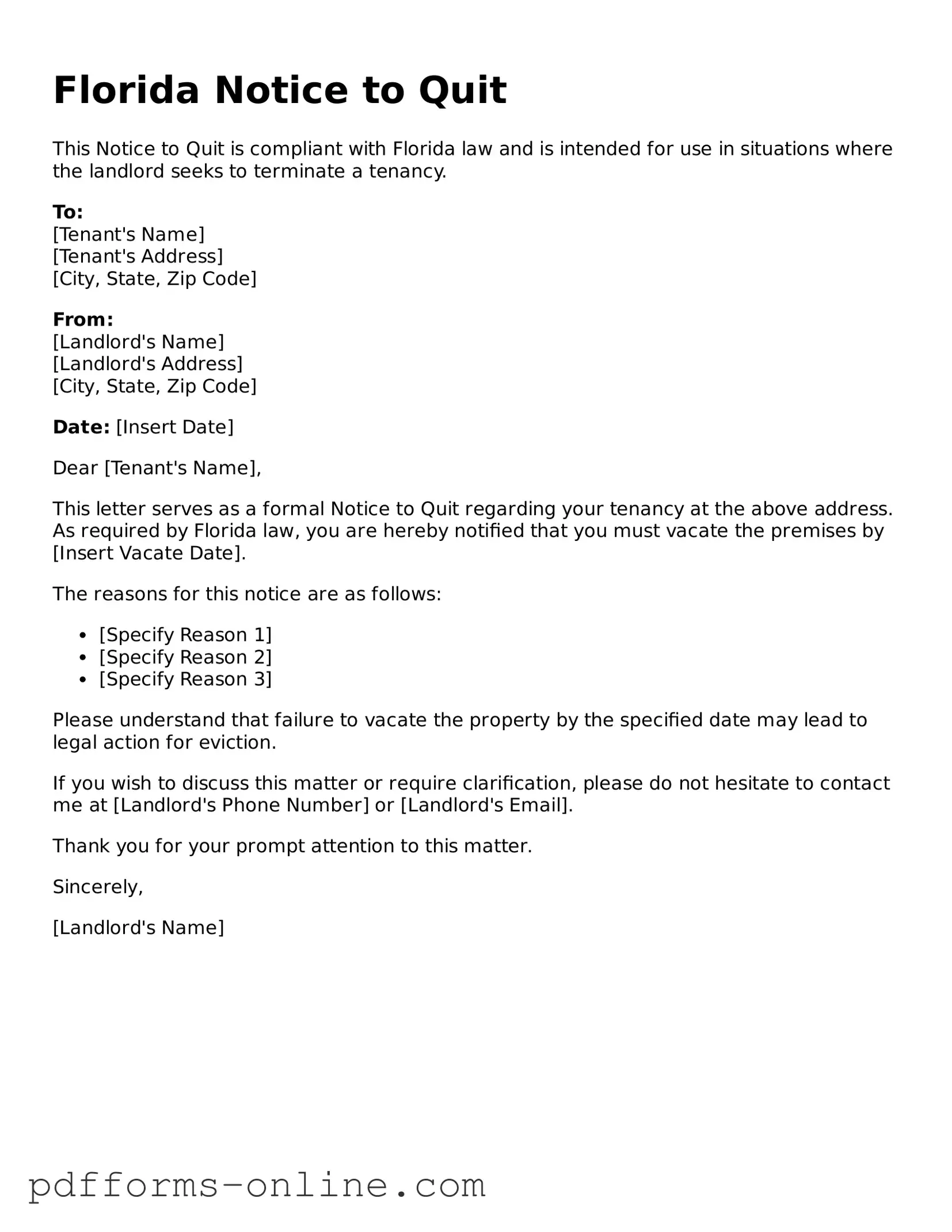Valid Florida Notice to Quit Template
The Florida Notice to Quit form is a legal document used by landlords to formally notify tenants of their intent to terminate a rental agreement. This form outlines the reasons for the eviction and provides the tenant with a specified timeframe to vacate the premises. Understanding this process is crucial for both landlords and tenants to ensure compliance with state laws.
For more information and to fill out the form, click the button below.
Open This Notice to Quit Online
